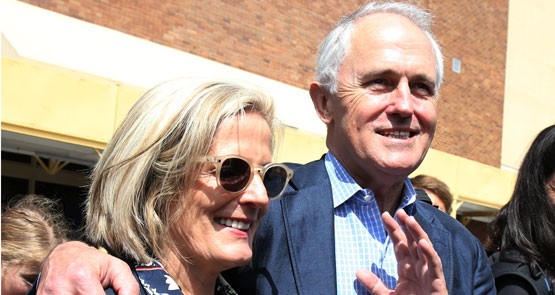
Are Australia’s No. 1 power couple, Malcolm and Lucy Turnbull, behind the establishment of the Greater Sydney Commission to oversee planning and construction in the nation’s biggest city?
Legislation to create the commission has passed both houses of NSW Parliament with Labor support and is now awaiting the signature of the NSW Governor to pass into law.
And interestingly, in her 1999 book, Sydney: Biography of a City, Lucy Turnbull, City of Sydney lord mayor in 2003-04, wrote:
“Perhaps, at a time when the Sydney region has been enjoying such a surge in economic activity, it is time to revive the idea promoted early in the 20th century of a Greater Sydney Movement.
“The planning and future of Sydney … should not be left to a sometimes apparently ill-coordinated cluster of state government departments … and an almost dizzying plethora of 41 councils.”
In his first ministry Turnbull created a new portfolio of Cities and the Built Environment and appointed Adelaide MP Jamie Briggs as its first minister.
Declaring that cities are where most Australians live and where economic growth is located, Turnbull said: “We often overlook the fact that liveable cities, efficient productive cities, the environment of cities, are economic assets.”
Premier Mike Baird’s NSW government is scrupulously following the Turnbull policy script: plans are advanced to cut in half the number of Sydney councils, and the appointment of Greater Sydney Chief Commissioner, three commissioners and six district commissioners — all handpicked by Baird and Planning Minister Rob Stokes — is underway.
The aim of the commission is to remove controversial planning issues from the political arena — federal, state and local — and give the all-powerful, unelected commission the right to approve major development projects without community interference.
“Our model seeks to depoliticise planning decisions by having a board that does not need to seek re-election,” Stokes explained to Parliament.
Apart from the 10 government-appointed commissioners, the commission will include the permanent heads of the Department of Planning and Environment, NSW Transport and NSW Treasury, and three key committees will manage its agenda: finance and governance, infrastructure delivery and strategic planning.
The new body will take over the Metropolitan Greenspace Programme and Shaping Sydney Harbour and will replace the Sydney Joint Regional Planning Panels, the planning project devised and arduously created by Labor’s Craig Knowles, the planning minister from 2003 to 2005.
Faced with the inevitability of a new supremo body in charge of infrastructure and land development, private sector lobbyists are now busily promoting favoured candidates to become full-time commissioners.
No one will disagree with Stokes’ bleak assessment of the history of the city’s chaotic development:
“In the past, Sydney has been criticised as being too dependent on its good looks, with our planning and growth being lazy and incoherent. More than often Sydney has traded on its physical beauty rather than intelligent and thoughtful design.”
During Labor’s 16-year rule from 1995 to 2011, developers ran the NSW planning agenda with the help of pliable Planning NSW bureaucrats and some biddable ministers. Stokes is attempting to end that scandal-ridden environment, setting targets for home-building and choosing independent experts, not politicians or developers, to run his new authority.
His target is 50,000 new homes a year across the state, for a grand total of 664,000 by 2031.
Stokes’ approach marks the end of an era when Sydney planning had three informal zones: north of the harbour was entitled to special planning protocols, south of the harbour had another set and western Sydney had not much planning at all.
During debate on the Greater Sydney Commission Bill Labor and Greens MPs acknowledged that Stokes’ motives were honourable and his objectives desirable. They questioned the commission’s accountability and transparency, but their amendment for a joint parliamentary oversight committee was defeated by the combined vote of the Coalition, Shooters and Fishers Party and Fred Nile’s Christian Democratic Party.
Despite government claims that the commission’s staff would be “small”, critics fear that it could end up becoming a cash-devouring bureaucracy with more paper shufflers than visionary urban planners, civil engineers and architects.
Its remit is so wide that clashes with Planning NSW, the state’s traditional planning bureaucracy, Infrastructure NSW and the city’s new mega-councils seem inevitable.
This is a case where the policy is virtuous but its delivery and execution threaten to become its undoing. Seems like a good time for Malcolm and Lucy to hold another dinner party at Point Piper with all the influential stakeholders.








I accept, Alex, that I have the advantage of having been a close observer of the operations of Sydney’s Councillors and their relationships with State Politicians for more than six decades; but any competent researcher would be aware of the strong arguments for hoping Turnbull’s politically brave actions will succeed, wouldn’t he.
Oh that’s right, it was Abbott who said he was cutting red tape….